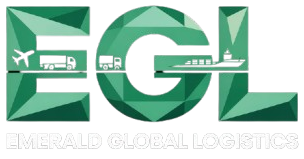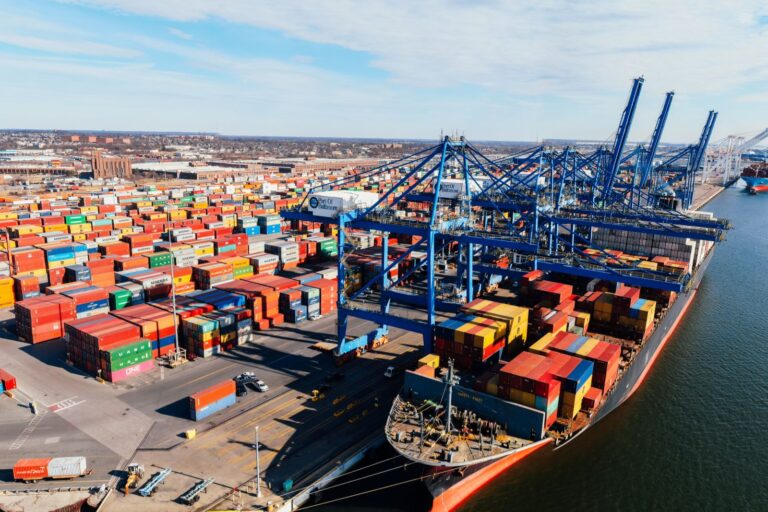Expanding your business internationally often requires significant capital and financial planning. Many Australian businesses face cash flow challenges when importing or exporting goods, which can slow growth or limit opportunities. Understanding trade finance options Australia provides can help companies manage payments, reduce risk, and access funding efficiently.
At EGL – Emerald Global Logistics, we assist businesses in navigating international logistics while providing guidance on financing solutions that support smooth cross-border transactions. This guide covers the most common trade finance options, their benefits, best practices, and practical examples to help businesses make informed decisions.

Why Trade Finance Matters for Australian Businesses (H2)
Trade finance is critical for businesses that import or export goods because it:
- Improves cash flow: Access funds to pay suppliers or manage operations.
- Reduces risk: Protects against non-payment or currency fluctuations.
- Facilitates growth: Enables businesses to take on larger orders or expand globally.
- Enhances supplier trust: Timely payments strengthen relationships with international partners.
EGL – Emerald Global Logistics works with clients to ensure their trade operations are financially secure and compliant with international standards.
Common Trade Finance Options in Australia (H2)
1. Letters of Credit (H3)
- Definition: A bank guarantees payment to the exporter once specific conditions are met.
- Advantages: Reduces payment risk, ensures compliance, and builds trust between parties.
- Best for: High-value international transactions where security is essential.
2. Bank Guarantees (H3)
- Definition: A promise by the bank to cover financial obligations if the client defaults.
- Advantages: Enhances credibility and facilitates supplier confidence.
- Best for: Import contracts or performance-based agreements.
3. Export/Import Financing (H3)
- Definition: Short-term loans or credit facilities for purchasing or selling goods internationally.
- Advantages: Supports cash flow and helps bridge the gap between shipment and payment.
- Best for: Businesses needing working capital for international transactions.
4. Invoice Financing (H3)
- Definition: Borrowing against unpaid invoices to access immediate funds.
- Advantages: Improves liquidity without waiting for customer payment.
- Best for: SMEs with growing export orders.
5. Documentary Collections (H3)
- Definition: Banks facilitate payment collection by exchanging shipping documents for payment.
- Advantages: Cost-effective alternative to letters of credit, with moderate risk coverage.
- Best for: Trusted trading partners or regular clients.
Step-by-Step Guide: How Trade Finance Works (H2)
- Determine your financing needs: Assess your cash flow and transaction type.
- Select the appropriate trade finance option: Choose based on risk, cost, and business size.
- Prepare documentation: Include invoices, shipping documents, and contracts.
- Engage a bank or finance provider: Apply for the chosen facility.
- Complete transaction: Ship goods and receive payment under agreed terms.
- Repay or settle finance: Fulfill obligations to the bank or financing provider.
Costs and Pricing Insights (H2)
Trade finance costs vary depending on the option and transaction:
- Letters of Credit: 0.5–2% of transaction value.
- Bank Guarantees: Fees around 0.25–1% of the guaranteed amount.
- Invoice Financing: Interest rates 1–3% per month.
- Export/Import Loans: Varies by bank, typically short-term interest rates applied.
Investing in trade finance solutions helps businesses manage cash flow effectively and reduces potential losses from delayed payments.
Best Practices for Trade Finance (H2)
- Understand all costs and fees: Avoid hidden charges.
- Maintain accurate records: Documentation is critical for approvals.
- Choose the right finance partner: Banks and providers with trade expertise, like EGL, offer guidance and support.
- Monitor exchange rates: Protect against currency fluctuations.
- Plan shipments carefully: Align financing with delivery schedules to optimise cash flow.
Common Mistakes to Avoid (H2)
- Failing to assess risk properly.
- Choosing inappropriate financing for the transaction.
- Delayed documentation submission.
- Ignoring bank fees or hidden charges.
- Not tracking repayment obligations carefully.
Use Cases & Examples (H2)
Scenario 1: A Sydney exporter used a letter of credit to secure payment from an overseas client, ensuring the transaction was risk-free.
Scenario 2: A Melbourne importer accessed invoice financing to maintain cash flow while waiting for customer payments, preventing delays in future shipments.
Scenario 3: EGL assisted a Brisbane-based company with bank guarantees for large import orders, increasing supplier trust and expanding their trade network.
FAQs (H2)
Q1: What is the easiest trade finance option for SMEs?
A1: Invoice financing is often the most accessible and cost-effective for small businesses.
Q2: How long does a letter of credit take to process?
A2: Typically 3–7 business days, depending on documentation and bank procedures.
Q3: Can trade finance protect against currency risk?
A3: Some options, like letters of credit and bank hedging, help mitigate currency fluctuations.
Q4: Does EGL provide trade finance advice in Australia?
A4: Yes, EGL offers guidance on trade finance options tailored to business needs.
Q5: Are there hidden fees in trade finance?
A5: Banks may charge processing, confirmation, or handling fees; always review terms.
Conclusion & Call-to-Action (H2)
Exploring trade finance options Australia helps businesses manage cash flow, reduce risk, and expand globally. From letters of credit to invoice financing, selecting the right solution ensures secure, timely transactions.
If you’re ready to optimise your international trade operations, contact EGL today for expert support: Contact Us.
Learn more about our services at Home or our company background on About Us.







